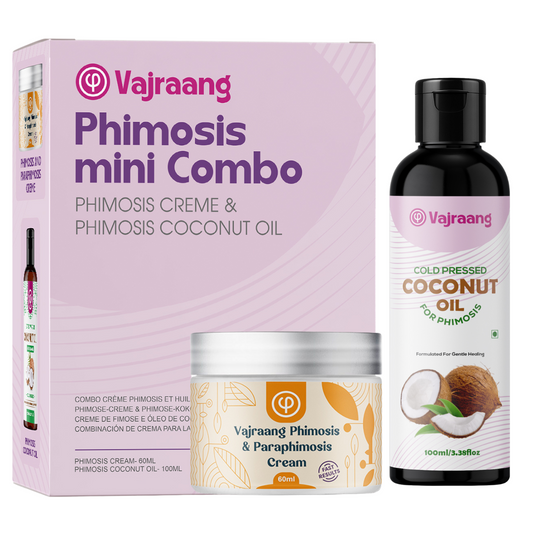Feeling pain during stretching exercises or sexual activity while managing phimosis can be discouraging, but it’s a common experience. Pain is your body’s way of signaling that adjustments are needed. The key is to address it promptly, understand the causes, and adopt strategies to prevent it in the future. Let’s explore why pain happens and how you can navigate through it safely and confidently.
Why Does Pain Happen?
1. Overstretching the Foreskin
Using tools that are too large or pushing the foreskin beyond its current flexibility can cause strain or microtears.
2. Lack of Lubrication
Friction during stretching or intimacy irritates sensitive areas, especially the phimotic band.
Learn more about lubrication’s role in phimosis care in “The Importance of Lubrication in Phimosis Treatment”.
3. Tight Frenulum (Frenulum Breve)
A short frenulum can restrict foreskin movement, leading to discomfort during retraction or intimacy.
For more insights, visit “Understanding the Role of the Frenulum in Phimosis”.
4. Glans Sensitivity
Limited exposure of the glans increases its sensitivity, making touch or friction feel sharp or painful.
Learn how to manage this in “Desensitizing the Glans for Improved Comfort”.
5. Inflammation or Infection
Pain accompanied by redness, swelling, or itching may indicate balanitis or another infection that requires treatment before resuming your routine.
Steps to Address Pain
1. Pause Immediately
Stop any activity—stretching or intimacy—when pain occurs. It’s crucial to reassess your approach.
2. Examine the Area
Look for signs like redness, swelling, or tears. Rest the area if needed to promote healing.
3. Soothe with Cream
Apply Vajraang Phimosis & Paraphimosis Cream to reduce irritation, hydrate the skin, and support healing.
4. Warm Compress
A warm, damp cloth applied to the area can soothe discomfort and improve circulation for faster recovery.
5. Adjust Your Technique
• Stretching: Reduce intensity or use a smaller Vajraang Phimosis Stretching Ring.
• Intimacy: Increase lubrication and use slow, gentle movements to avoid friction.
6. Take a Break
Allow the area to recover by pausing stretching or sexual activity for a few days.
7. Consider Over-the-Counter Pain Relief
Use non-prescription pain relievers like ibuprofen to reduce inflammation and discomfort.
Preventing Pain in the Future
1. Start Gradually
Begin with minimal expansion using tools like the Vajraang GlanPro Tool and progress slowly.
2. Lubricate Well
Always apply Vajraang Extra Virgin Coconut Oil to reduce friction and enhance comfort.
3. Warm Up the Tissue
A warm bath or compress before stretching helps make the skin more pliable and reduces the risk of tears.
4. Address Glans Sensitivity
Gradually desensitize the glans by exposing it to light touch or warm water. This process is explained further in “How to Manage Hypersensitivity of the Glans”.
5. Maintain Hygiene
Use a mild cleanser like Phimosis Intimate Wash to prevent infections and irritation.
6. Communicate During Intimacy
Talk with your partner about your condition and adjust movements for mutual comfort.
When to Seek Medical Advice
Reach out to a healthcare provider if you experience:
• Persistent or severe pain.
• Signs of infection, such as redness, pus, or fever.
• Difficulty urinating due to swelling or tightness.
• Little to no progress despite consistent efforts.
Reassurance for Your Journey
Pain is a temporary hurdle on the road to recovery. By addressing discomfort promptly and adopting safe practices, you’re ensuring long-term success. Remember, overcoming phimosis isn’t about rushing—it’s about steady, consistent progress.
With tools like the Vajraang GlanPro Tool and Vajraang Phimosis Stretching Rings, paired with proper care and patience, comfort and confidence are within reach.
You’ve got this—step forward with confidence and care!





